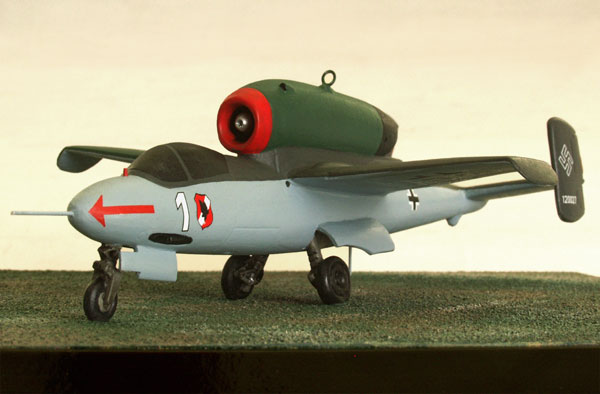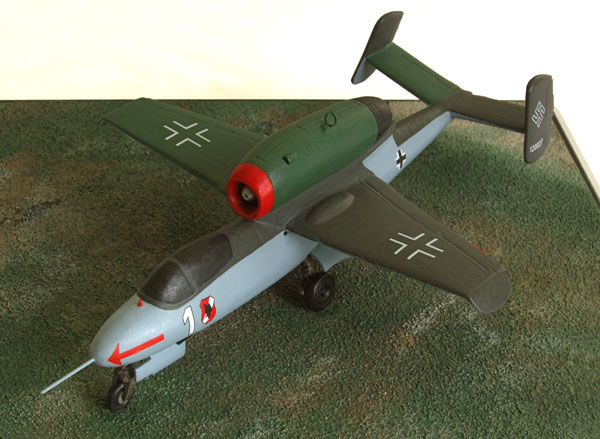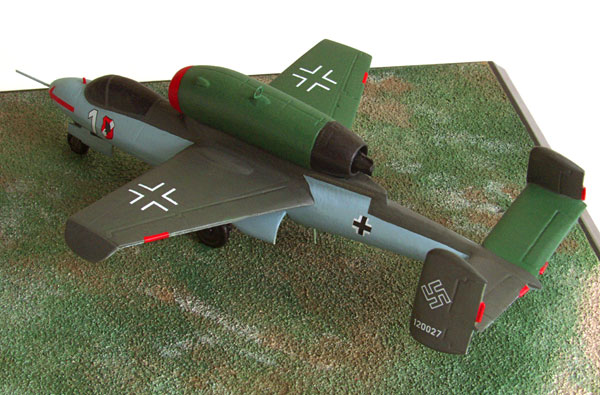Heinkel He 162A-2
Heinkel He 162A-2 ‘White 1’ Wrk Nr 120027
I./JG.1, Lt. Rudolf Schmitt, Leck, May 1945
The Heinkel design for a “Volksjager” (People’s Fighter) was one of several produced in response to a specification from the Reichluftministerium issued in September 1944 for a simple high-performance “light” fighter to be built with a minimum of strategic materials. The plan was to supplement the Messerschmitt Me 262, which would be the service’s primary interceptor, with an aircraft that could be flown by pilots with a minimum of training (one idea was to draw the pilots from the Volksturm, the equivalent of the Home Guard). Heinkel’s successful submission went from drawing-board to first flight in sixty-nine days, and in spite of early structural problems was put in to mass production with 1,000 He 162s a month projected from Heinkel alone. Early aircraft, including the A-2 sub-type, carried a pair of 20 mm, MG 151 cannon, these being replaced by 30 mm. MK 108 in the A-3s. Only about 120 He 162s were actually delivered, though parts and sections for many more were revealed by the advance of the Allied armies when slave labour factories were discovered, built in the salt mines of Eger.
Jagdgeschwader 1 relinquished its Focke-Wulf Fw 190s in early February to go to Parchim for conversion to the He 162, and ten weeks later I/JG.1 took its aircraft to Leck at Schleswig-Holsten, which had by this time of the war become virtually a collection centre for Luftwaffe units and their aircraft. JG 1 was the only unit to operate the He 162. There are no authenticated reports of allied aircraft coming in to contact with an He 162. Nicknamed the Spatz (Sparrow) by the Luftwaffe, ‘White 1’ wears the red arrow that was applied to many of JG.1s He 162s as well as the “diving eagle” emblem of 1/JG.1. Lt Rudolf Schmitt is thought to have been the first pilot in a combat situation to have saved his life by use of an ejector seat when the engine of his He 162 failed.
Eleven He 162s were taken over by the RAF and four by the USAAF, with one being flown at the Royal Aircraft Establishment, Farnborough in 1945. One of the test pilots’ conclusions was that although it would give a good performance in the hands of an experienced pilot the He 162 would give problems to a novice, and the RAE example was destroyed in a crash caused by over-use of the rudders.
Today eight He 162s survive in museums or storage across the world.
Scale 1:72 Wingspan 4.75″ (100.6 mm)
Base size 6.37″ (162 mm) square (No. 4)
Weight not including base 4.75 ozs (138 grams) Limited edition of 50 only




